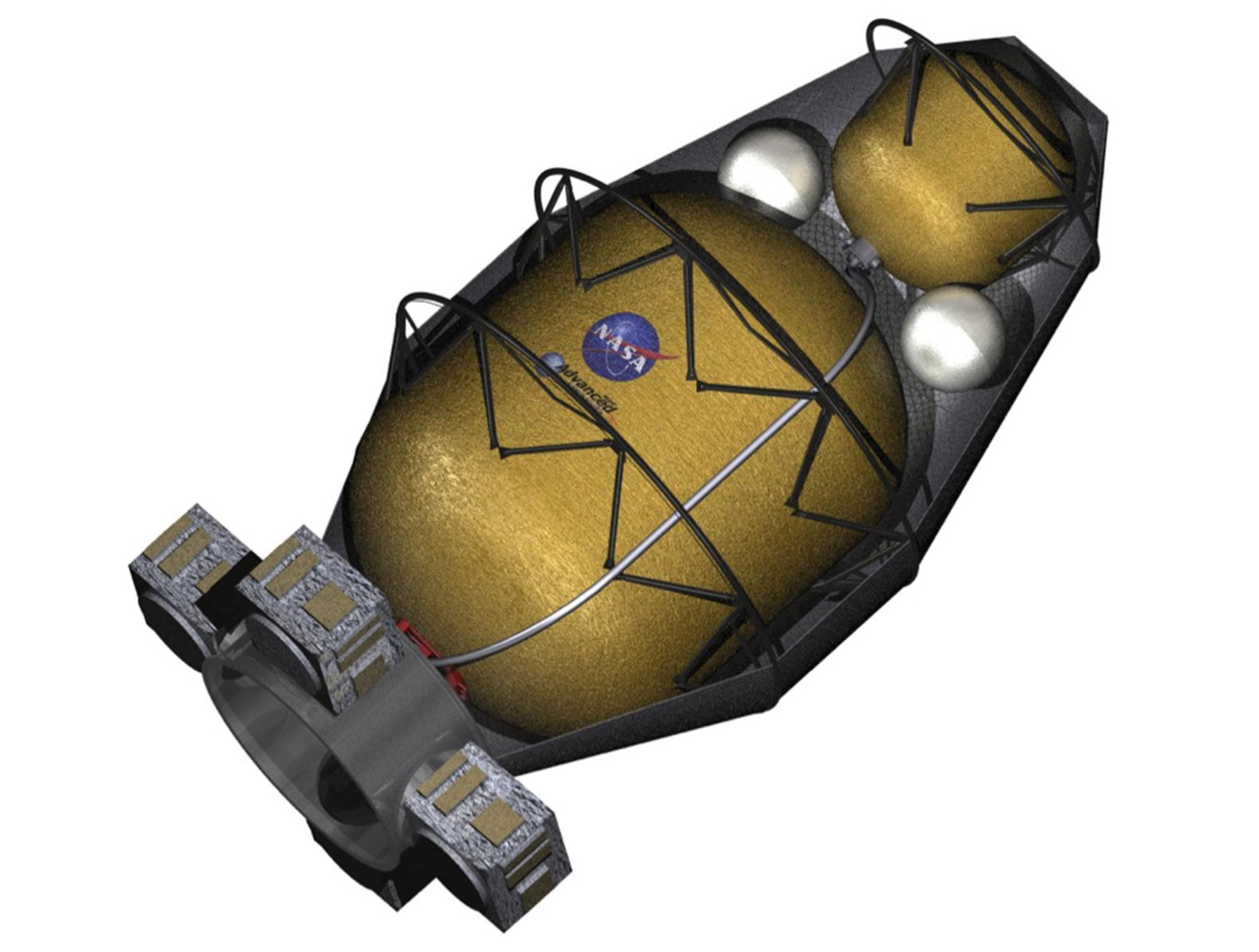Search
Mechanical and Fluid Systems

System and Method for Fluid Dynamic Mass Gauging
Fluid Dynamic Mass Gauging (FDMG) is a microgravity-compatible system that applies principles of fluid dynamics, the ideal gas law, and thermodynamics to determine the volume of an incompressible fluid within a tank by measuring the compressible volume in the same tank. In a simplified embodiment, the determination of the remaining volume of the fluid within a given storage tank can be calculated from a time measurement of a pressure change during a filling or venting process applied to the storage tank. The process may be automated and features low mass and volume requirements, enabling its use in any gravitational or inertial environment with minimal hardware modifications. The novel system can determine the volume of a non-condensing, incompressible fluid within a rigid tank of known or unknown volume without requiring the use of bulky equipment in microgravity locations with fixed or limited free space.
Instrumentation

Capacitive Micro-Gravity Fluid Mass Gauge
The capacitive micro-gravity fluid mass gauge with spatial regularization is a sensor that can be outfitted to propellant vessels and can provide a determination of the mass of liquid and gas inside the vessel volume with a determinable level of accuracy. The sensor consists of 1) a number of discrete electrodes that are installed to the inner surface of the vessel wall, 2) signal generating, digitizing, signal conditioning, and general support (e.g., power supply) electronics, 3) electrical connections between the electrodes and the electronics, and 4) the algorithm used to turn the set of capacitance measurements (i.e., the capacitance matrix) into a volume fraction. The electronics generate and apply a sinusoid to a single electrode, and then the electronics measure the charge on all other electrodes. Capacitance is simply the charge divided by the voltage. This is repeated for all electrodes, without repeating duplicates. For a vessel with a fixed volume, the volume fraction can be converted to the mass fraction using the Ideal Gas Law so long as the fluid constituents, temperature, and pressure are known.



